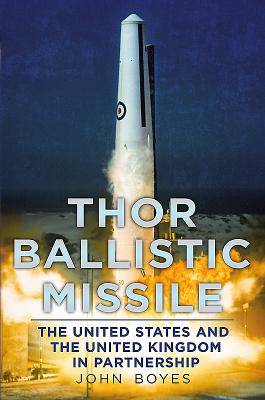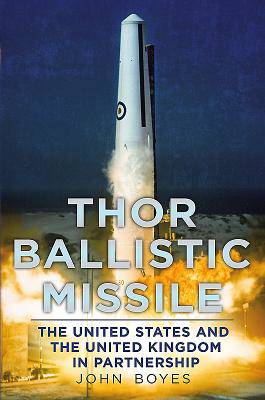
- Afhalen na 1 uur in een winkel met voorraad
- Gratis thuislevering in België vanaf € 30
- Ruim aanbod met 7 miljoen producten
- Afhalen na 1 uur in een winkel met voorraad
- Gratis thuislevering in België vanaf € 30
- Ruim aanbod met 7 miljoen producten
Zoeken
€ 34,95
+ 69 punten
Omschrijving
In the mid-1950s faced with worrying advances in Soviet missile technology, the United States sought to develop an IRBM to act as a stop-gap until the Atlas ICBM became operational. Intense inter-service rivalry followed before the US Air Force gained the upper hand in deploying the missile. The UK, keen to improve the 'special relationship' with the US which had suffered following the Suez Crisis agreed to accept 60 Thor missiles to be operated by RAF crews. Complex negotiations followed and once the twenty sites had been identified a considerable number of American personnel, both civilian and servicemen, crossed the Atlantic to build and commission the bases. The agreement allowed for training the RAF crews leading to some 1,300 personnel traveling to America to learn the complexities of the Thor system leading to a series of twenty-one launches from Vandenberg Air Force Base. Covering activities on both sides of the Atlantic, the book features a number of previously unpublished photographs and includes plans and diagrams of the missile sites and equipment.
Specificaties
Betrokkenen
- Auteur(s):
- Uitgeverij:
Inhoud
- Aantal bladzijden:
- 224
- Taal:
- Engels
Eigenschappen
- Productcode (EAN):
- 9781781554814
- Verschijningsdatum:
- 19/11/2015
- Uitvoering:
- Hardcover
- Formaat:
- Genaaid
- Afmetingen:
- 157 mm x 236 mm
- Gewicht:
- 544 g

Alleen bij Standaard Boekhandel
+ 69 punten op je klantenkaart van Standaard Boekhandel
Beoordelingen
We publiceren alleen reviews die voldoen aan de voorwaarden voor reviews. Bekijk onze voorwaarden voor reviews.











